
The fennec fox is a little crepuscular fox that is indigenous to the North African deserts, from the Sinai Peninsula to Western Sahara. Its ridiculously huge ears, which are used to vent heat and listen for underground prey, are its most distinguishing characteristic. The smallest type of fox is the fennec.
Read on to learn incredible facts about the fennec fox.
1. Fennec Foxes Are Domesticated In Some States
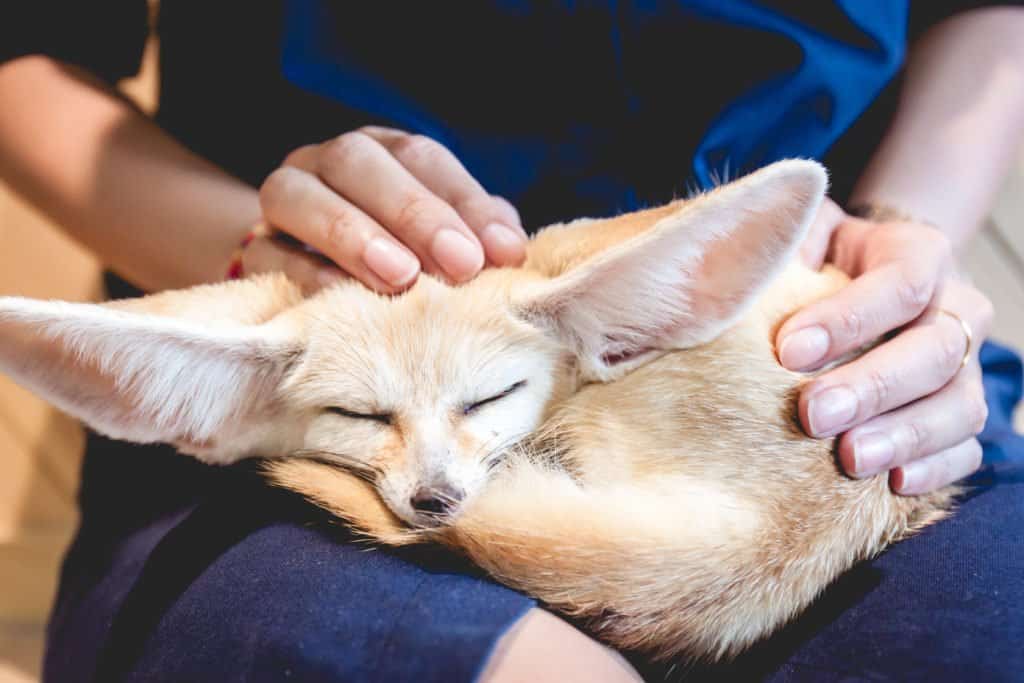
The fennec fox can be domesticated in certain states.
©Chill Chillz/Shutterstock.com
There are several states in the United States where it is acceptable to keep a fennec fox as a pet. Because they are different from cats and dogs, their requirements are not necessarily the same as those of other common pets. Therefore, it is necessary to have knowledge about the proper care to maintain their happiness and good health.
2. Fennec Foxes Stay Close To Their Families
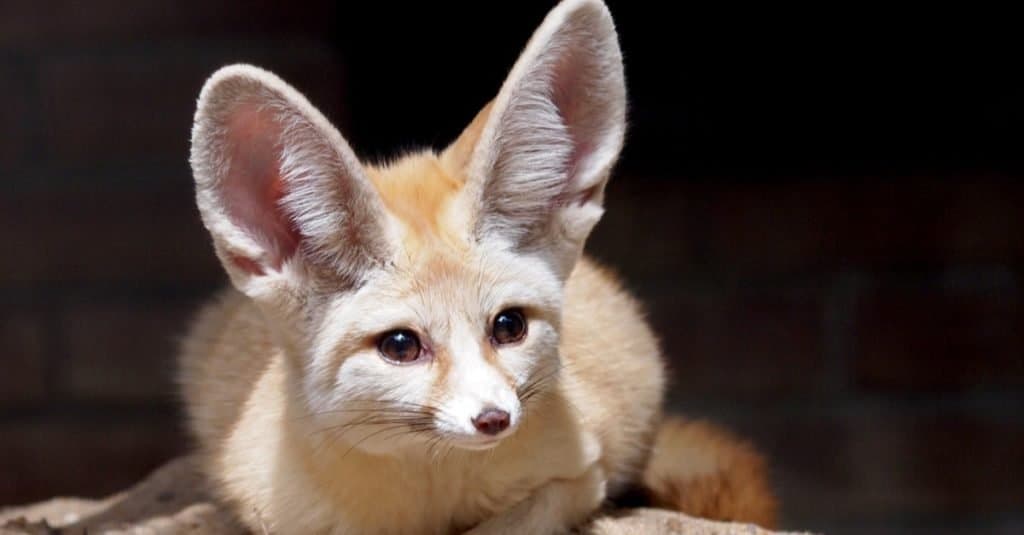
Fennec foxes form a large group, unlike other foxes.
©iStock.com/Anolis01
Most foxes typically thrive alone. The fennec fox is unique, however. Around 8 to 10 of these foxes form large groups known as a ‘skulk,” the majority of which are family. This skulk of foxes typically includes a single mating pair that bonds for life. Siblings from previous litters as well as members of the current litter may be present as well. Female fennecs typically have one litter of up to 6 kits per year.
3. Fennec Fox Ears Are Half Their Bodily Size
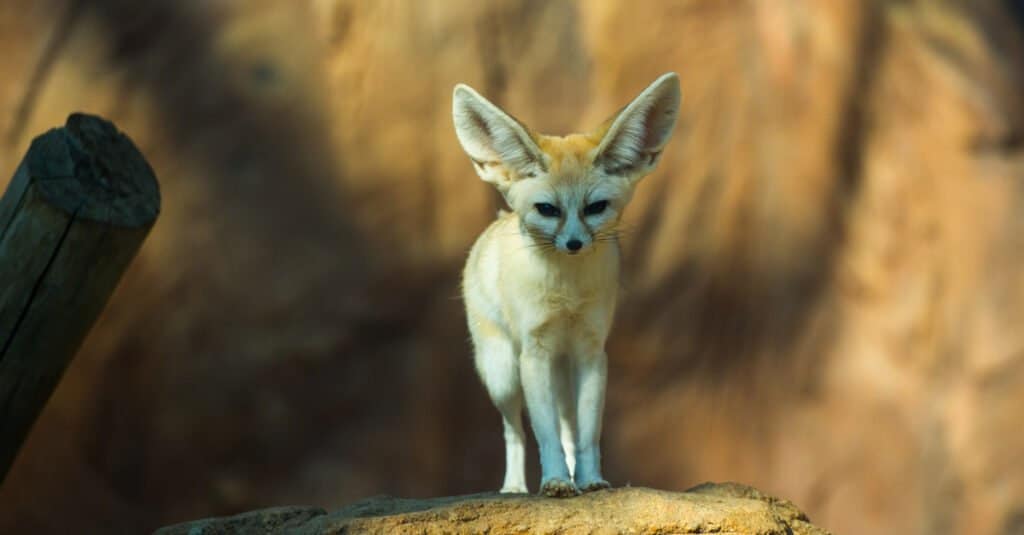
The fennec fox lives underground and only comes out when the temperature falls.
©DONGSEUN YANG/Shutterstock.com
The enormous, bat-like ears are one of the distinguishing characteristics of the fennec fox. The length of these creatures’ ears—can reach up to 15 centimeters! —is one of the traits that set them apart from other animals. When they are fully mature, the ears of a fennec fox can reach a length of up to six inches in length. It’s possible for a fully grown fennec fox to grow to be roughly twice that!
4. Fennec Foxes Are Great Communicators
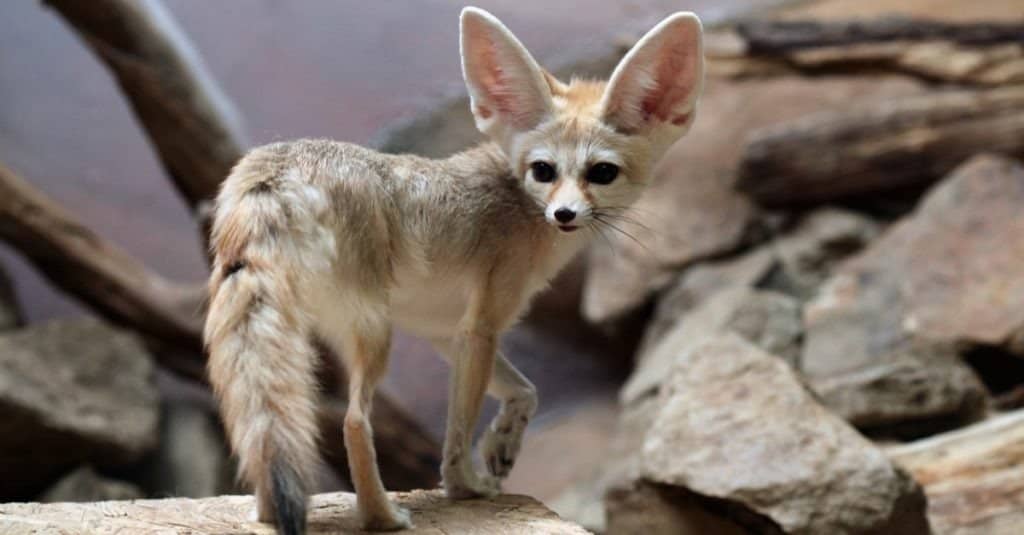
Fennec foxes have complex social dynamics.
©iStock.com/wrangel
Fennec foxes have developed excellent communication skills probably because they live in large family groups with complex social dynamics much like those of humans. They may produce a wide range of intriguing calls and sounds. They occasionally don’t sound like little Fox would be expected to.
5. Fennec Foxes Will Eat Almost Anything
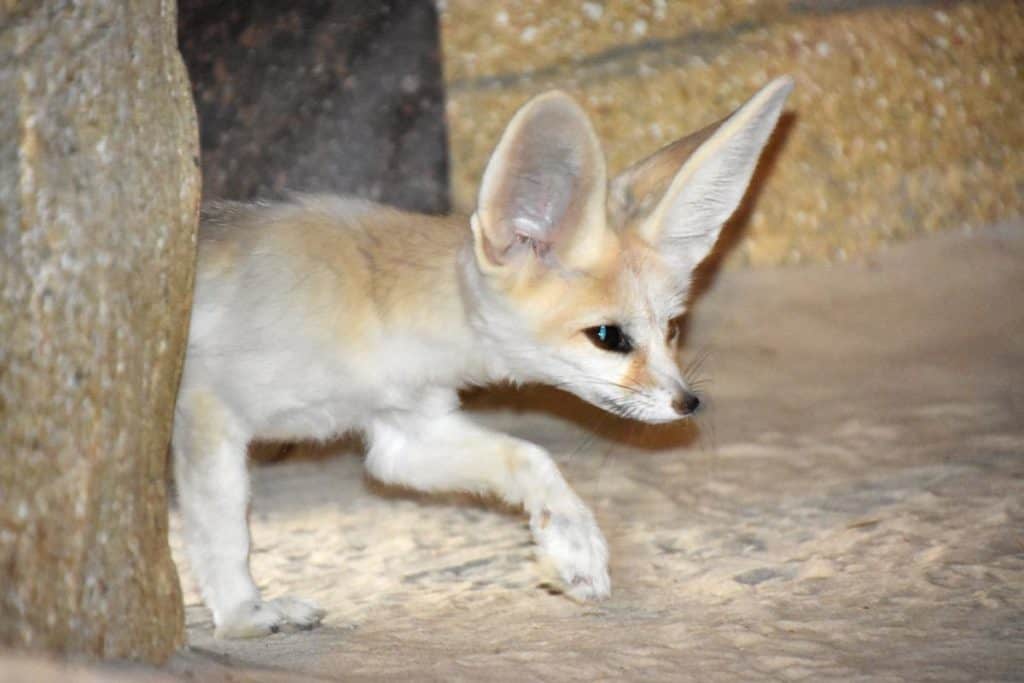
Fennex foxes are opportunistic eaters.
©Millie Bond – Copyright A-Z Animals
It is well known that fennec foxes are opportunistic eaters. To put it another way, they’ll consume just about anything they can find in the wild. This includes reptiles, insects, birds and their eggs, tiny rodents like mice, and lizards. Fennec foxes, unlike many other canids, will also look for high-moisture food items including fruit, leaves, and roots.
6. Fennec Foxes Breathe As Many As 690 Times Each Minute!
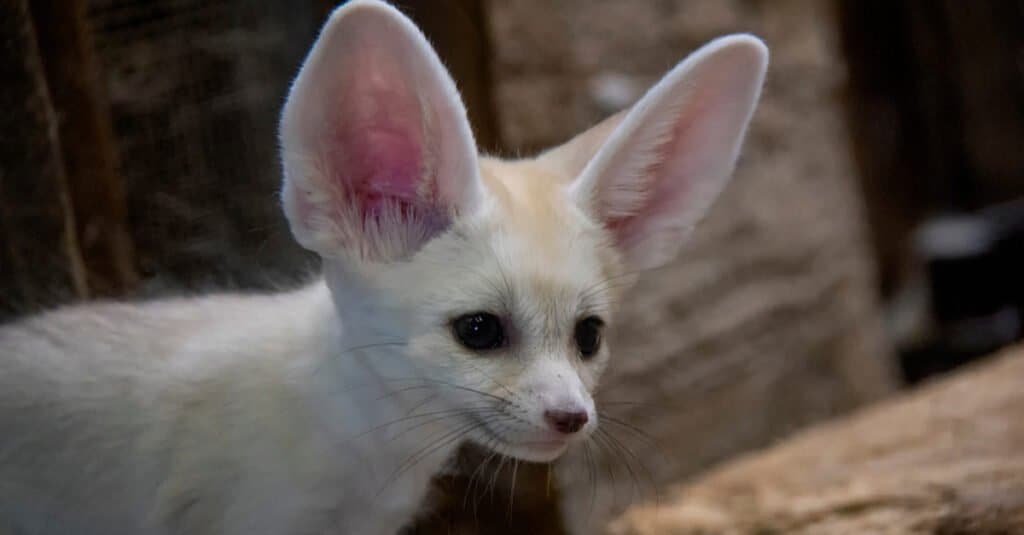
Fennec foxes can breathe up to 690 times per minute when panting!
©Lucie Bartikova/Shutterstock.com
Foxes have a rapid breathing rate, with around 24 breaths per minute being the average. In a typical minute, a person will breathe between 12 and 20 times. When the heat rises, fennec foxes begin to pant. During this phase, a fennec fox can take as many as 690 breaths in 60 seconds, a rate 30 times its normal breathing rate. Constantly in and out of breath, they can keep their core temperature stable in the scorching sun.
7. Fennec Foxes Big Ears Act Like Air Conditioners
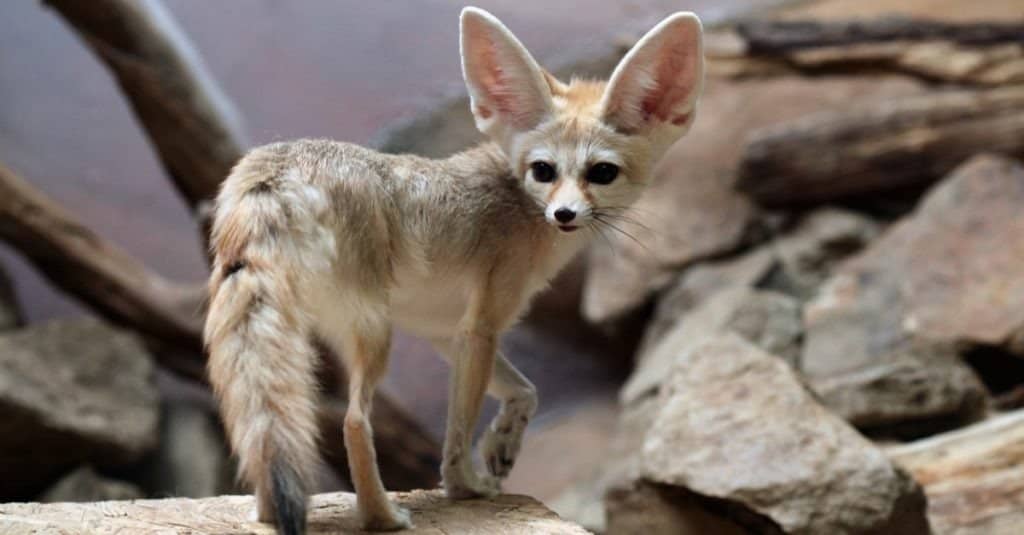
The fennec fox has ears that help it keep cool!
©Vladimir Wrangel/Shutterstock.com
The fennec fox’s large ears not only assist him in finding delectable underground prey but also allow him to stay cool. The big ears are completely open on both sides. This characteristic aids in controlling body temperature by assisting blood circulation in cooling the fennec. This allows the fox to maintain a safe body temperature even in the scorching North African desert.
8. Fennecs Can Survive Without Open Water
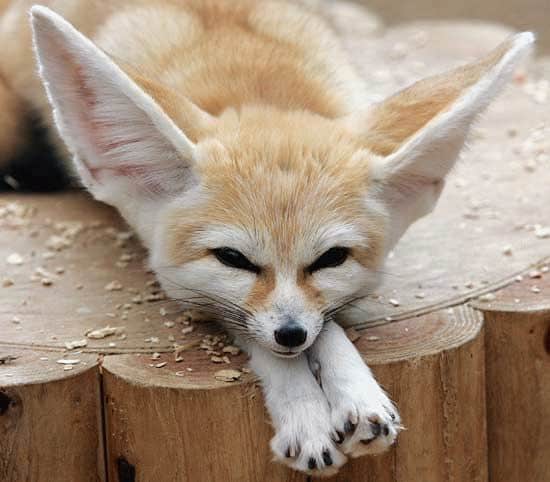
The fennec fox gets most of its water intake from food.
Most living organisms need open water, such as lakes, rivers, or puddles of rain to get adequate hydration. However, Fennec foxes can go years without drinking from these types of water sources. Instead, they get water from the insects, rodents, reptiles, and eggs they consume. The fox also drinks dew from its burrow walls. This is because they have adapted to limit water loss in the desert heat. Please remember, If you own a fennec, always provide it with a water source!
9. Fennec Foxes Are Very Vocal Animals

Fennec foxes are extremely vocal animals.
Fennec foxes make a high-pitched “eh-eh-eh” type of call or scream to attract attention. Fennecs can yip or make a loud “Nya-nya-nya” sound when defending food. Unexpectedly, this tiny little fox can bark quite loudly. When threatened or intruded, fennecs screech defensively.
Socialization and patience are advantageous for domesticated fennecs. Fennec foxes generate a chirpy, small trill when they’re happy, touched, or secure. After they’ve expended some energy, petting them makes them happy. According to many fennec owners, these adorable foxes like having their bellies and ears rubbed as well!
10. Fennec Foxes Are Great At Digging
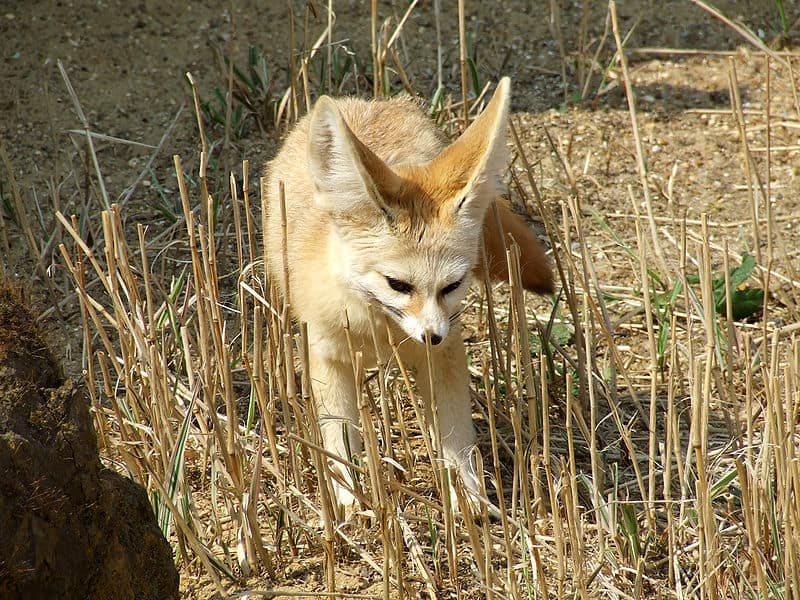
The fennec fox is an expert digger.
Like rattlesnakes and prairie dogs, these tiny foxes love to burrow. In fact, they can burrow up to 20 feet deep! They’ll find a shaded plant and excavate an entrance around its base, utilizing the plant’s roots as natural reinforcement. The fennec hides in these tunnels to evade the eagle owl, which is its natural predator. Females will line their burrows with leaves before giving birth.
It is important to keep in mind, If you have a pet fennec, it’ll need a safe play area. Outdoor settings must be built to prevent them from climbing over or digging underneath a fence or wall!
The photo featured at the top of this post is © Lucie Bartikova/Shutterstock.com
Thank you for reading! Have some feedback for us? Contact the AZ Animals editorial team.






